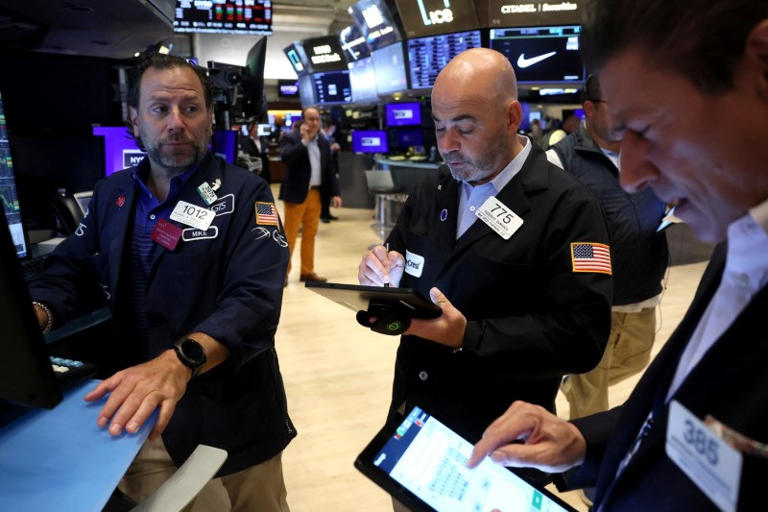U.S. stocks ended on a high note on Friday, extending their impressive gains for the week and marking their most significant percentage increases of the year. The S&P 500 and Nasdaq Composite both recorded their seventh consecutive session of gains, effectively reversing some of the losses experienced during a recent market downturn. This rebound comes after a period of heightened concern about an economic slowdown, which had led to a sharp sell-off that pushed the Nasdaq into correction territory.
The rally across major indexes was fueled by a wave of positive economic data and growing investor optimism. The S&P 500, which is a broad measure of the market, closed up by 11.03 points, or 0.20%, at 5,554.25. The Nasdaq Composite also saw an increase, rising by 37.22 points, or 0.21%, to reach 17,631.72. Meanwhile, the Dow Jones Industrial Average added 96.7 points, or 0.24%, ending the day at 40,659.76. All three indexes notched their largest weekly percentage gains since late October, with the S&P 500 and Nasdaq recording their first weekly gains in five weeks.
The market’s upward momentum is partly due to reassuring economic reports that have helped alleviate recession fears. The Labor Department’s consumer price index and a retail sales report from the Commerce Department indicated that inflation is moving closer to the Federal Reserve’s 2% target, and consumer spending remains strong. Additionally, a report showed that single-family housing starts fell to a near 1.5-year low in July, while consumer sentiment, as measured by the University of Michigan, showed a stronger-than-expected improvement for August.
Investors are also closely watching the upcoming Jackson Hole Economic Symposium, where Federal Reserve Chair Jerome Powell is scheduled to deliver a keynote speech. This event is expected to provide further insight into the Fed’s monetary policy stance and potential rate cuts. Market participants are particularly focused on Powell’s comments, as they are likely to set expectations for future rate adjustments.
According to the CME’s FedWatch tool, financial markets are currently pricing in a 74.5% chance that the Federal Reserve will cut its key policy rate by 25 basis points at the end of its September meeting. There is also a 25.5% chance of a more substantial 50-basis-point cut. Chicago Fed President Austan Goolsbee recently suggested that the central bank should be cautious about maintaining restrictive policies longer than necessary, adding to the anticipation of potential rate changes.
Sector performance revealed a mixed picture. Financials led the S&P 500 with the biggest percentage gain, while industrials experienced the most significant decline. Specific stocks also made headlines: Applied Materials, for instance, saw its shares drop by 1.9% after forecasting stronger-than-expected fourth-quarter revenue. Similarly, Amcor’s U.S.-listed shares fell by 3.7% following a larger-than-anticipated drop in fourth-quarter sales.
In terms of market breadth, advancing issues outpaced decliners on the NYSE by a 2.22-to-1 ratio, and on Nasdaq, advancers led by a 1.53-to-1 ratio. The S&P 500 saw 13 new 52-week highs and no new lows, while the Nasdaq Composite recorded 66 new highs and 85 new lows.
Trading volume on U.S. exchanges was 10.11 billion shares, below the 12.27 billion average for the past 20 trading days, indicating a period of moderate trading activity. As the market prepares for next week’s events and potential developments from Jackson Hole, the outlook remains cautiously optimistic.
